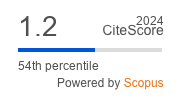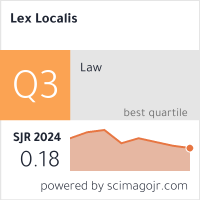ECONOMETRIC MODEL TO UNDERSTAND TREND FOR TRANSMISSION MECHANISMS OF RESERVE BANK OF INDIA - 2014 TO 2024
DOI:
https://doi.org/10.52152/d6xgsy44Ključne besede:
Price Stability, External Benchmark, Monetary Transmission Mechanism, Econometric Model, Indian Economy, Flexible Inflation Targeting (FIT)Povzetek
The last decade witnessed a change in the functioning and use of financial policy. From financial year 2015, the Reserve Bank of India (RBI) has fundamentally reshaped in application and use of monetary policy. The central bank of Country moved from a multi-indicator approach to Flexible Inflation Targeting (FIT), this is the primary objective behind stability in price. To improve the effectiveness of this policy, the RBI also mandated that banks should link new floating rate loans to an external benchmark, such as the repo rate. To ensure that changes in policy rates are benefits the borrowers swiftly. This reform was aimed to strengthen the monetary transmission mechanism. This process helps the central bank policy to have a great impact & influence over the broader economy. The present study is based on the transmission mechanism for Reserve Bank of India and the shift that has taken place from the last decade i.e. 2014 to 2024. An econometric model is proposed to analyse the transmission during this period of 2014 to 2024. The main objective behind the study is to analyse the rate of changes and impact of this transition in the Indian economy. That has helped to maintain a smooth rate of growth in the midst of slow down due to corona and global dip in the economy,
Prenosi
Objavljeno
Številka
Rubrika
Licenca
Avtorske pravice (c) 2025 Lex localis - Journal of Local Self-Government

To delo je licencirano pod Creative Commons Priznanje avtorstva-Nekomercialno-Brez predelav 4.0 mednarodno licenco.








